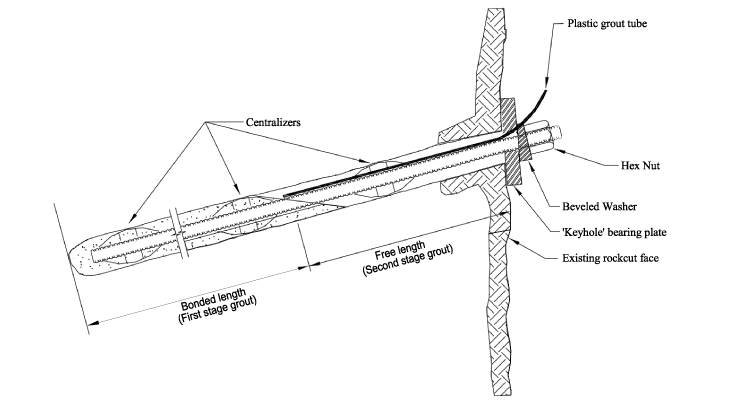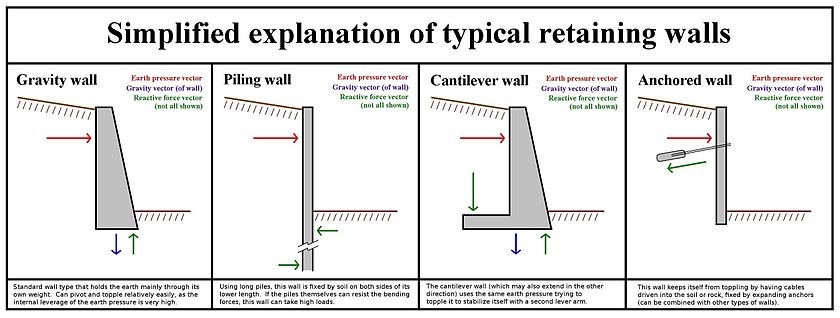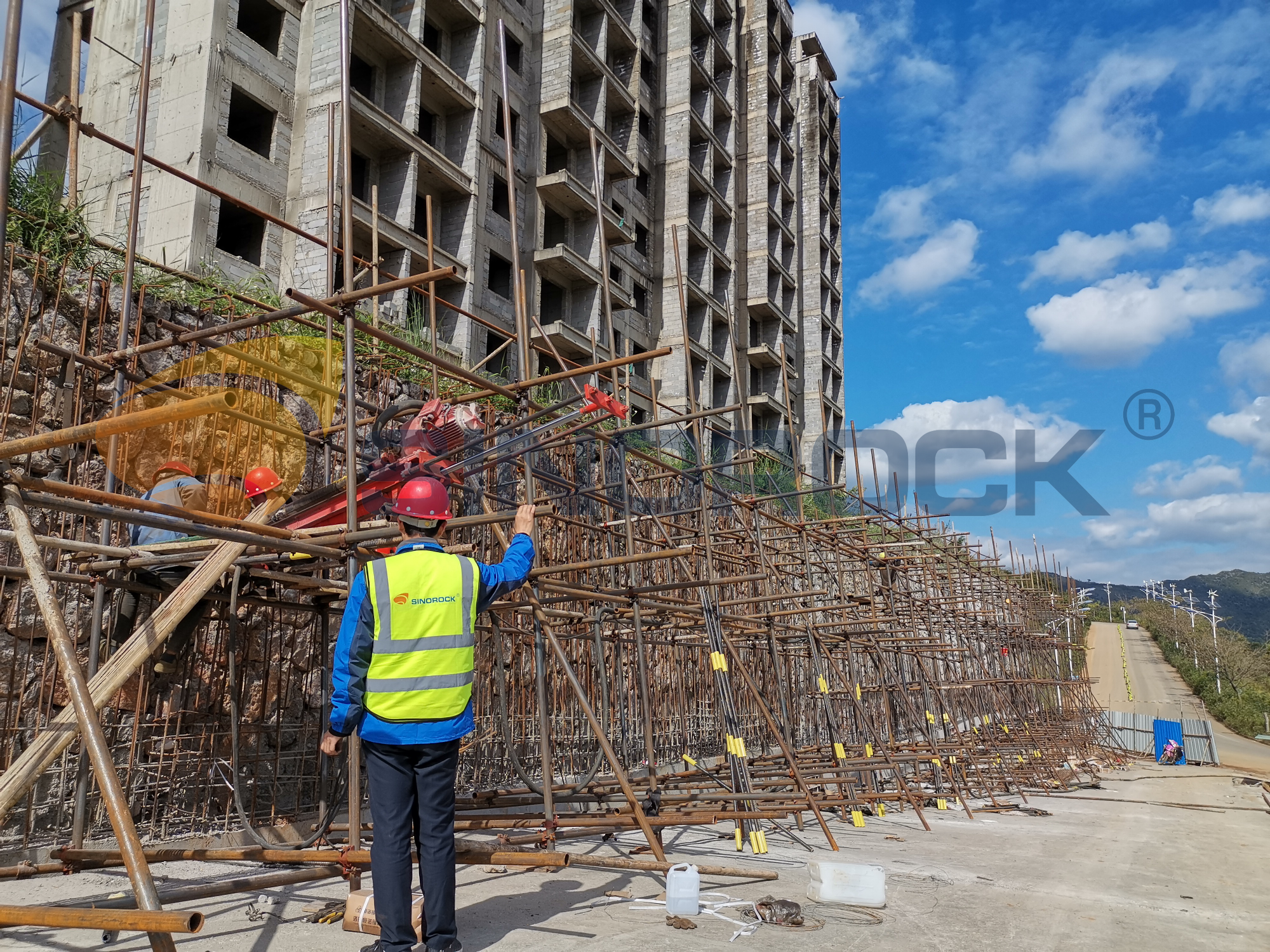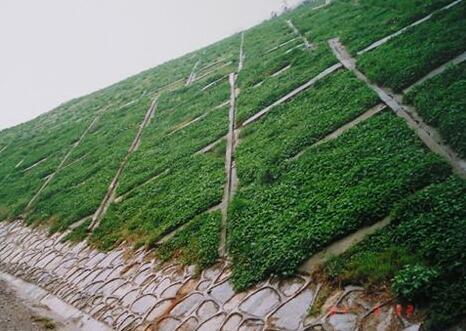Four Common Methods for Slope Support
Time:2025-03-12From:sinorock View:
Introduction
Slope stability is a cornerstone of safe construction, mining, and residential development. Unstable slopes pose risks of landslides, soil erosion, and structural damage, making effective slope protection methods vital. With advancements in geotechnical engineering, professionals now have a suite of techniques to address diverse challenges, from highway excavations to backyard terraces. This article explores four proven slope stabilization methods, emphasizing their applications in both large-scale projects and residential slope stabilization.
1. Anchor Bolt Support: Precision and Durability
Anchor bolt systems are a gold standard for reinforcing slopes, particularly in rocky or unstable terrains.

a) Ordinary Anchor Bolt Support
Process:
Holes are drilled into the slope at strategic intervals.
Steel bars or cables are inserted and grouted in place.
Anchors transfer load from unstable layers to stable strata.
Advantages:
High tensile strength.
Adaptable to varying soil/rock conditions.
Applications:
Stabilizing cliffs near highways.
Securing foundations in hilly residential areas.
b) Self-Drilling Anchor Bolt Support
Process:
Hollow bars with drill bits penetrate the slope while injecting grout simultaneously.
Eliminates separate drilling and grouting steps.
Advantages:
Faster installation (ideal for time-sensitive projects).
Reduced risk of borehole collapse in loose soils.
Residential Use:
Ideal for stabilizing backyard slopes without heavy machinery.
Sinorock’s self-drilling systems offer DIY-friendly solutions for homeowners.
Why Choose Sinorock?
As a leader in self-drilling anchor bolt technology, Sinorock provides corrosion-resistant, high-strength systems tailored for residential and industrial projects.
2. Retaining Wall Support: Structural Versatility
Retaining walls are a go-to solution for managing soil pressure and preventing erosion.

a) Gravity Retaining Walls
Design: Relies on weight (concrete, stone) to resist soil pressure.
Best For: Slopes under 4 meters (e.g., garden terraces).
b) Cantilever Walls
Design: Reinforced concrete with a base slab for leverage.
Best For: Medium-height slopes (4–10 meters) in urban developments.
c) Counterfort Walls
Design: Vertical concrete webs (counterforts) connecting the wall and base.
Best For: High walls where space is limited (e.g., bridge approaches).
d) Anchored Walls
Design: Combines walls with ground anchors for extra reinforcement.
Best For: Slopes with high lateral pressure.

e) Sheet Pile Walls
Design: Interlocking steel/vinyl sheets driven into soft soils.
Best For: Temporary stabilization during residential construction.
Residential Tips:
Use gabion walls (wire cages filled with stone) for aesthetic, permeable solutions.
Consult engineers to match wall type with soil type (e.g., clay vs. sandy soils).
3. Shotcrete Support: Speed and Flexibility
Shotcrete involves spraying concrete onto slopes for instant stabilization.
.png)
Types:
Dry Mix: Water added at nozzle; suitable for small repairs.
Wet Mix: Pre-mixed; offers smoother application for large areas.
Reinforcement:
Steel mesh or synthetic fibers enhance crack resistance.
Applications:
Stabilizing loose soil in residential basements.
Protecting highway cuts from weathering.
Residential Use:
Combine with drainage systems to prevent water buildup behind shotcrete layers.
4. Plant Protection: Eco-Friendly Stabilization
Vegetation reduces erosion through root cohesion and water absorption.

Techniques:
Hydroseeding: Spraying seed slurry for rapid coverage.
Erosion Control Blankets: Biodegradable mats hold soil until plants establish.
Best Plants for Slopes:
Grasses (e.g., vetiver) for shallow roots.
Shrubs (e.g., juniper) for deeper stabilization.
Residential Landscaping:
Integrate native plants for low-maintenance slopes.
Use terraced planting to manage steep backyards.
Choosing the Right Slope Protection Method
Consider these factors:
Soil Type: Clay requires drainage; sandy soils need anchoring.
Slope Angle: Steep slopes (>45°) demand structural solutions (e.g., anchors).
Budget: Vegetation is cost-effective; shotcrete offers long-term savings.
Environmental Impact: Plant-based methods enhance biodiversity.
Professional Assessment:
Always conduct geotechnical surveys to identify groundwater levels, soil composition, and failure risks.
Conclusion
From self-drilling anchor bolts to eco-friendly vegetation, modern slope protection methods cater to projects of all scales. For homeowners, understanding residential slope stabilization methods can prevent costly repairs and enhance property safety. As a pioneer in ground support, Sinorock combines innovation with practicality, offering solutions like self-drilling anchors that simplify slope stabilization.
Need Expert Advice? Contact Sinorock at sinorock@sinorockco.com for tailored guidance on your next project.
latest news
-

- What Are the Applications of SDA Bolts in Hydropower Stations?
- Time:2025-08-21From:This Site
- Learn how self-drilling anchor bolts enhance slope stability, tunnel support, and dam reinforcement in complex geological conditions at hydropower stations. Optimize hydropower projects with efficient, cost-effective, and eco-friendly solutions.
- View details
-

- Slope Stabilization with SDA Bolts: Benefits & Applications
- Time:2025-08-19From:This Site
- Discover how self-drilling anchor bolts (SDA bolts) provide superior slope stabilization for highways, railways, and tunnels. Learn their key benefits, installation process, and real-world applications in loose or collapsible soils.
- View details
-

- How Self-Drilling Rock Bolts Enhance Tunnel Support in Fractured Rock?
- Time:2025-08-15From:This Site
- Discover how self-drilling rock bolts enhance tunnel support in fractured rock. Learn their benefits, installation steps, and real-world applications for safe, efficient tunneling.
- View details
-

- Sinorock 2025 Quality Month | Strengthening Quality Foundations, Empowering Product Excellence
- Time:2025-08-13From:This Site
- Sinorock’s 2025 Quality Month, themed “Strengthening Quality Foundations, Empowering Product Excellence,” successfully concluded, reinforcing our commitment to superior product quality.
- View details
-

- Sinorock Safety Month 2025 | Everyone Speaks Safety, Everyone Can Respond
- Time:2025-07-03From:This Site
- Sinorock Safety Month 2025, centered on the theme "Everyone Speaks Safety, Everyone Can Respond - Spot Workplace Hazards," has wrapped up successfully!
- View details
-

- Quality Control: the Vital Factor of A SDA Bolt Factory
- Time:2025-01-09From:This Site
- Sinorock’s comprehensive quality control system, from supplier management to outgoing inspections, ensuring the highest standards for self-drilling anchor bolts in construction.
- View details
-

- Sinorock Invites You to Explore Proven Self-Drilling Anchor Bolt Solutions at bauma 2025
- Time:2025-03-07From:This Site
- From April 7–13, 2025, explore Sinorock’s Self-drilling anchor bolt solution at Booth C2.513/4 in Hall C2 of the Messe München Exhibition Center (Munich, Germany).
- View details
-
.jpg)
- SINOROCK to Attend EXPOMINA PERÚ 2024 in Lima, Peru
- Time:2024-08-10From:This Site
- Sinorock to Attend EXPOMINA PERÚ 2024 in Lima, Peru
- View details
-
.jpg)
- SINOROCK to Participate in MINING AND METALS CENTRAL ASIA 2024
- Time:2024-08-08From:This Site
- SINOROCK to Participate in MINING AND METALS CENTRAL ASIA 2024
- View details
 Download
Download 


